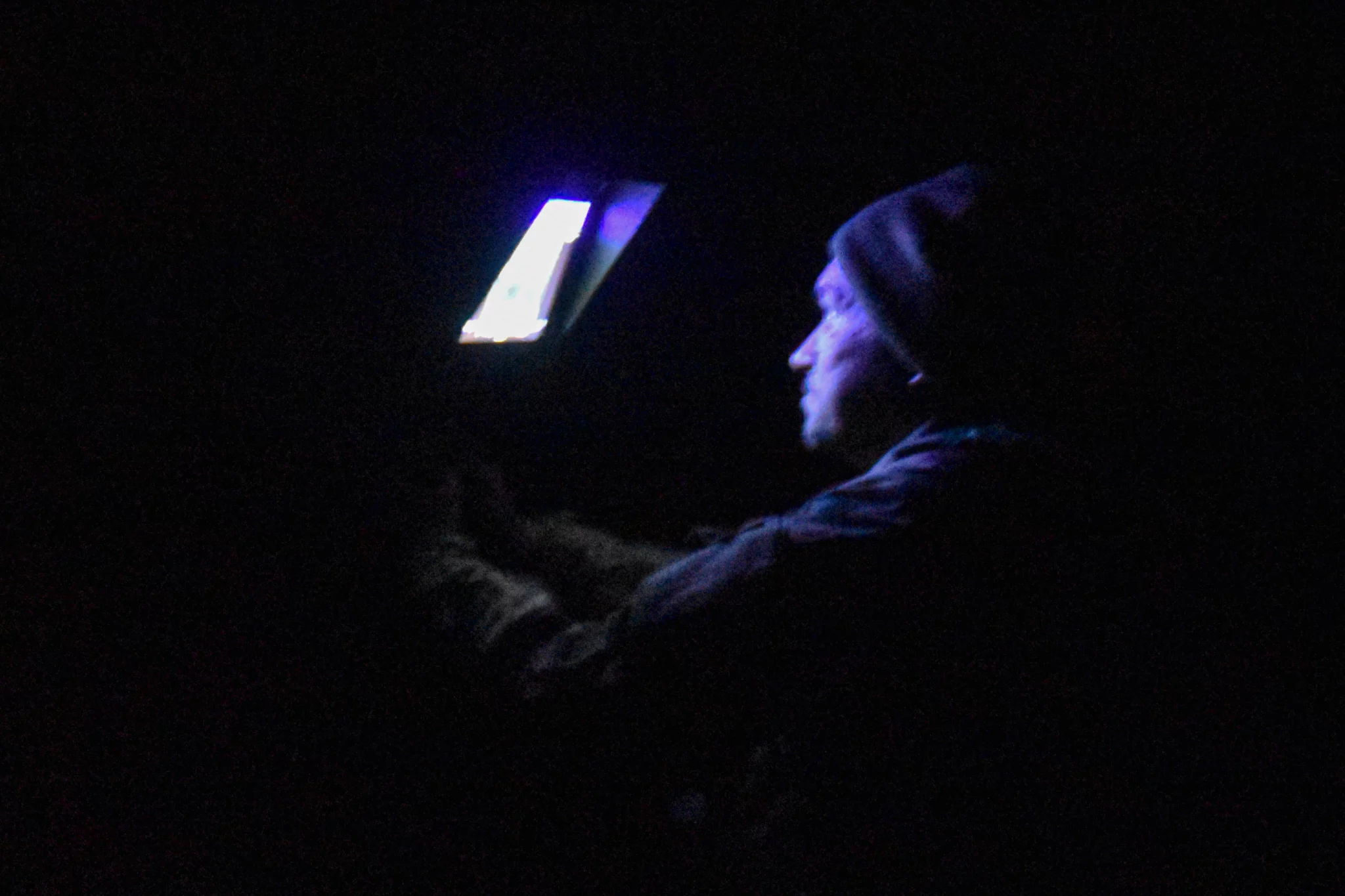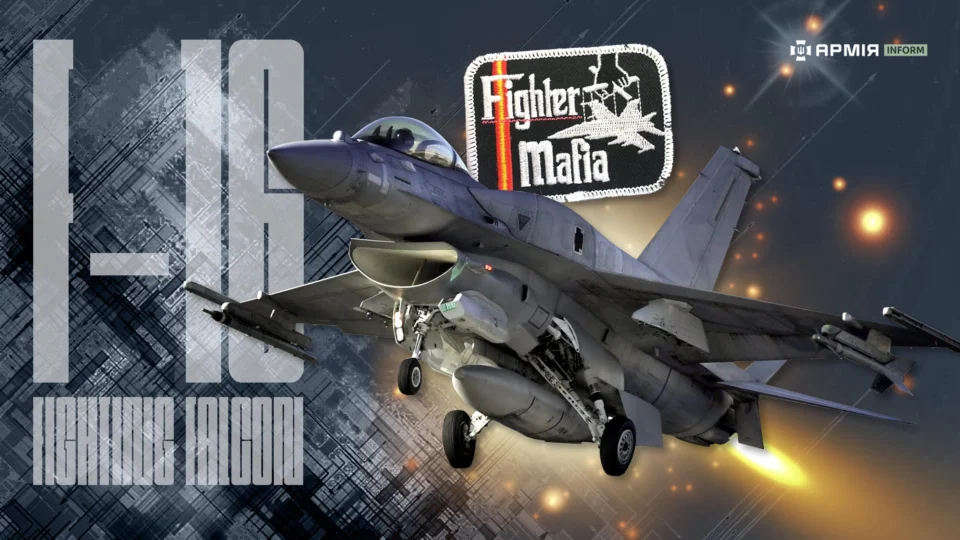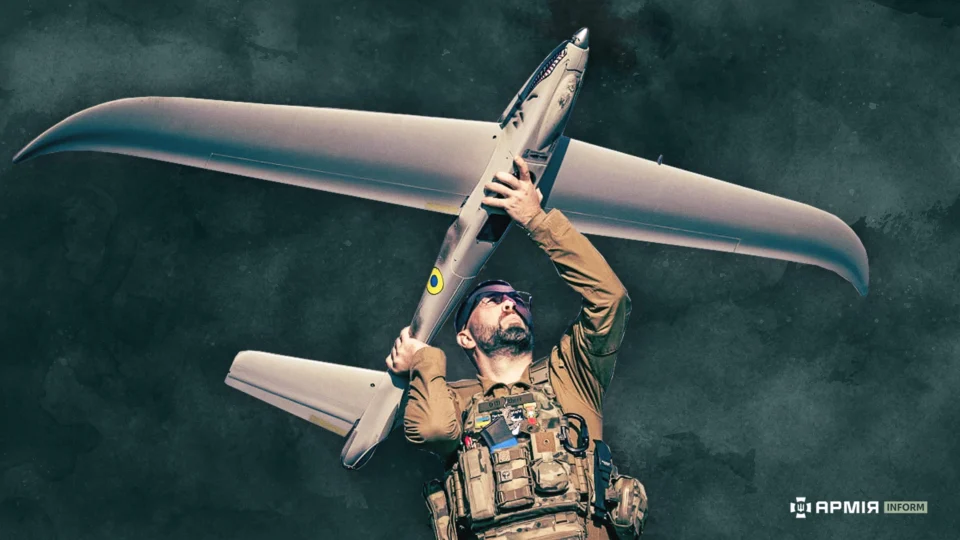A small group of officers and analysts challenged the dominant doctrine of heavy aircraft and proved that the future of…

The anti-aircraft gunners of the 68th Separate Jaeger Brigade named after Oleksa Dovbush hunt Russian Shaheds at night and shoot down reconnaissance “wings” and other enemy drones by day.
The soldiers told us about their combat work right at their firing position.
The breath of war
We’re heading to the gunners from Dnipro. There are many cars on the road, gas stations and repair shops are working — the war feels distant, unless you notice the number of military vehicles and the traces of Russian strikes. But the farther we go, the fewer civilian cars we see. Gas stations disappear, checkpoints multiply. The clearest sign that we’re nearing the front line is when mobile service vanishes, and the charred skeletons of burned-out cars appear along the roadside. There are many abandoned houses, some with pickup trucks parked near them bearing foreign license plates. All roadside trade happens from trailers and small stalls so that, when the front approaches, everything can be packed up quickly and moved farther to the rear.
We wait for the Jaeger paratroopers at the meeting point they specified. Dusk is falling — we wait for full darkness, because it’s safer to move to positions at night. Finally, a van arrives; the driver signals us to follow, and we set off. The night roads near the front are alive — our logistics come to life after dark. Roads, trails, fields. They show us where to leave the car — beyond that, we proceed on foot. In the darkness, the thunder of heavy cannon fire is clearly heard. The front doesn’t sleep at night either.
From underground to the sky
The gunners tell us they brought us to one of their safer positions — not the one constantly stalked by enemy FPV drones. Going there would be too risky; soldiers at those points are rotated rarely. But even here, strict camouflage rules apply. We see a machine gun hidden in the bushes; the entrance underground isn’t obvious either. The first autumn rains have just passed, so the stairs are slippery, and thick mud clings to our boots. We descend and see a network of underground corridors and rooms. The gunners explain that they’ve occupied a strongpoint along one of the rear defense lines. Here they have places to sleep, a small kitchen, and a command post.
The art of waiting
One of the gunners, named Taras, tells us about the specifics of their work.
— Every time, the Shaheds fly differently, — says Taras. — Sometimes they start around eight in the evening, but more often from midnight until dawn. Recently, they came around 5:30 — we could already see them with the naked eye, not through night optics. It’s mostly Shaheds, sometimes Gerans, and by day it’s usually reconnaissance drones. We use a Browning machine gun — its bullet can travel up to four kilometers, but the effective range is about two. It’s equipped with an electronic thermal sight that lets us target in the dark.

The sky is calm for now. We ask how he joined the army. It turns out Taras signed a contract back in 2019 and was already in service when the full-scale invasion began.
The fire team
The gunners work in teams of three. One sits underground monitoring a tablet that receives data on all detected aerial targets. Another is on watch beside the machine gun, ready to aim and open fire if needed. The third rests. They rotate every two hours. Among the automatic rifles, I notice a large-caliber rifle — it’s meant to hit enemy FPV drones, and every anti-aircraft crew has one.
— One Shahed is turning our way!
The soldier on watch clears the branches off the machine gun and readies the weapon. Gradually, the distant buzzing of a Shahed becomes audible. It grows louder. The gunner switches on the sight and scans the night sky.
— You have to be very attentive, — Taras explains. — At such distances, a Shahed looks like a tiny dot in the sight — easy to miss.
— Guys, it’s getting closer!— shouts Artem from underground.
— Eyes up!
Taras sweeps the gun across the sky, but the elusive dot never appears in his sight. The Shahed is closer now — almost above us.
— We hear it, but by the time the sound reaches us, it’s already passed far ahead. You have to aim with a lead. But we can’t see it — it’s above the clouds.
Taras keeps scanning but doesn’t fire — without visual confirmation, shooting would only waste ammo.
— It’s passed, — Taras concludes, but he doesn’t leave the position — Shaheds sometimes circle back. Not this time.
— See, the other fire groups aren’t shooting either — it’s above the clouds, they can’t see it.
Indeed, not a single burst comes from neighboring positions. The Shahed passes on; they’ll try to stop it farther in the rear. The soldiers remain on alert — enemy drones often come in waves. Soon, Artem shouts again — another Shahed inbound. The buzz grows louder. Taras takes aim, scanning the sky through the sight. The hateful droning grows near, but again, the clouds conceal the target. No dot, no shot. The Shahed flies lazily past.
Hunters of “Mopeds”
— Tonight’s unusual, — explains Artem. — Normally, we’d already be firing. For us, those Shaheds aren’t scary — we’re underground. But for peaceful cities, they’re a real threat. It’s a pity we couldn’t take it down. The Russians are cunning — they often send one Shahed ahead to scout for our firing groups, then launch the rest around our positions. And lately, they’ve been flying higher so it’s harder for us to hit them.

Soon, a third Shahed passes. The machine gun again points skyward, but the clouds hide the Russian weapon once more. The guys say it’s been a long time since a night went by without firing. We were simply unlucky.
We say our goodbyes, wishing that the clouds will clear by morning. Around midnight, passing Pavlohrad, we see several heavy impacts — flashes, then explosions. Every Shahed not shot down near the line of contact or deeper in the rear is a serious danger. That’s why the brigades dedicate so much manpower and equipment to stop the “mopeds” as early as possible. Sadly, it doesn’t always work — but it’s terrifying to imagine how many more strikes would hit the rear if not for the nightly work of our anti-aircraft gunners.
@armyinformcomua

President of Ukraine Volodymyr Zelenskyy reported that National Security and Defense Council Secretary Rustem Umerov and Chief of the General Staff Andriy Hnatov will hold a series of meetings in Brussels with national security advisers of European leaders.

Throughout the autumn, the intensity of hostilities increased. In November, the number of recorded combat engagements exceeded this year’s average monthly figures.

The F-16 Fighting Falcon project was born in defiance of the system. This revolutionary multirole fighter entered service thanks to the Fighter Mafia, which lobbied for the project and overcame resistance from conservative generals.

The wars of the 21st century impose unprecedented demands on the protection of military equipment.

He paid a 700-hryvnia fine just to gain the opportunity to become a volunteer in the Armed Forces of Ukraine.

Volodymyr Zelensky spoke about the preparation of peace agreements and the difficulties along this path.
A small group of officers and analysts challenged the dominant doctrine of heavy aircraft and proved that the future of…